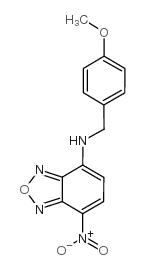Bismuth classification is associated with the requirement for multiple biliary drainage in preoperative patients with malignant perihilar biliary stricture.
Shin Miura, Atsushi Kanno, Atsushi Masamune, Shin Hamada, Tetsuya Takikawa, Eriko Nakano, Naoki Yoshida, Seiji Hongo, Kazuhiro Kikuta, Kiyoshi Kume, Morihisa Hirota, Hiroshi Yoshida, Yu Katayose, Michiaki Uuno, Tooru Shimosegawa
文献索引:Surg. Endosc. 29 , 1862-70, (2015)
全文:HTML全文
摘要
Single preoperative biliary drainage for malignant perihilar biliary stricture occasionally fails to control jaundice and cholangitis. Multiple biliary drainage is required in such cases, but their clinical background is unclear. We determined the clinical characteristics associated with the requirement for multiple biliary drainage.The consecutive 122 patients with malignant perihilar biliary stricture were enrolled in a single-center retrospective study. Preoperative biliary drainage was initially performed on the future remnant hepatic lobe. Additional drainage was performed if jaundice failed to improve or cholangitis developed in undrained hepatic lobes. Detailed clinical characteristics and the number of preoperative biliary drainage procedures required before operation were analyzed.Thirty-one patients (25.4%) initially underwent multiple biliary drainage. However, 69 (56.7%) required multiple biliary drainage by the time of the operation. In the univariate analysis, the initial serum bilirubin level, cholangitis, percutaneous portal vein embolization, history of inserted endoscopic biliary stenting, length of preoperative period, operative procedure, and Bismuth classification were significant factors. In the multivariate analysis using these factors, Bismuth classification was independently associated with the requirement for multiple biliary drainage. The number of patients who required multiple biliary drainage was higher in those with Bismuth-II (91.9%), Bismuth-IIIa (65.7%), and Bismuth-IV (92.9%) than in those with Bismuth-I (22.2%) and Bismuth-IIIb (18.2%).Patients with Bismuth-II, Bismuth-IIIa, and Bismuth-IV are at higher risk for multiple biliary drainage. A strategy based on the Bismuth classification for performing preoperative biliary drainage is important for patients with malignant perihilar biliary stricture.
相关化合物
| 结构式 | 名称/CAS号 | 分子式 | 全部文献 |
|---|---|---|---|
 |
7-(对甲氧基苄氨基)-4-硝基苯-2-恶唑-1,3-二唑
CAS:33984-50-8 |
C14H12N4O4 |
|
Coordinated epigenetic remodelling of transcriptional networ...
2015-01-01 [Clin. Epigenetics. 7 , 52, (2015)] |
|
Impact of the F508del mutation on ovine CFTR, a Cl- channel ...
2015-06-01 [J. Physiol. 593 , 2427-46, (2015)] |
|
Nutritional evaluation of Australian microalgae as potential...
2015-01-01 [PLoS ONE 10(2) , e0118985, (2015)] |
|
Electrochemical detection of anti-tau antibodies binding to ...
2016-03-01 [Anal. Biochem. 496 , 55-62, (2016)] |
|
Targeting of P-Element Reporters to Heterochromatic Domains ...
2016-02-01 [Genetics 202 , 565-82, (2016)] |